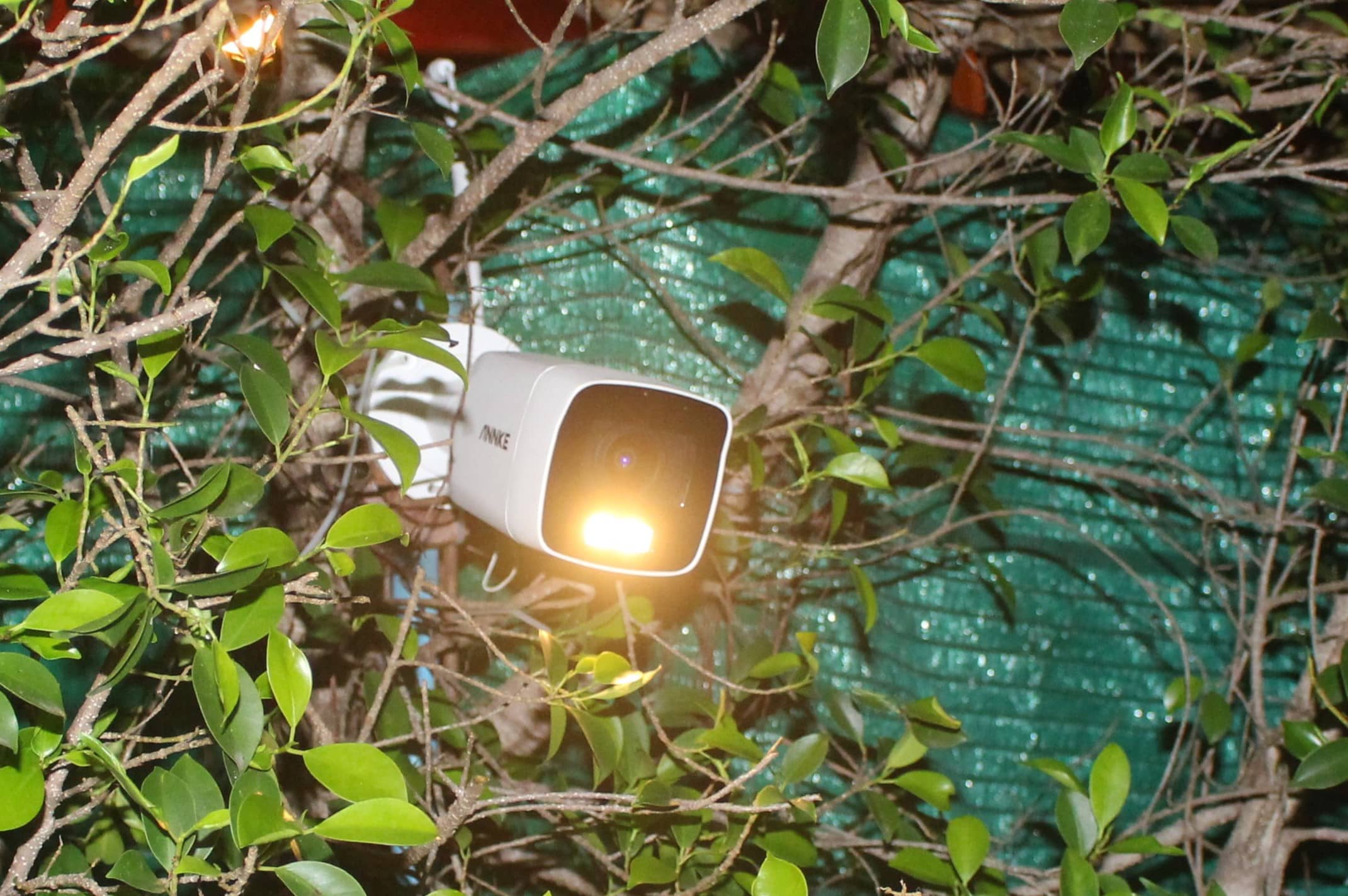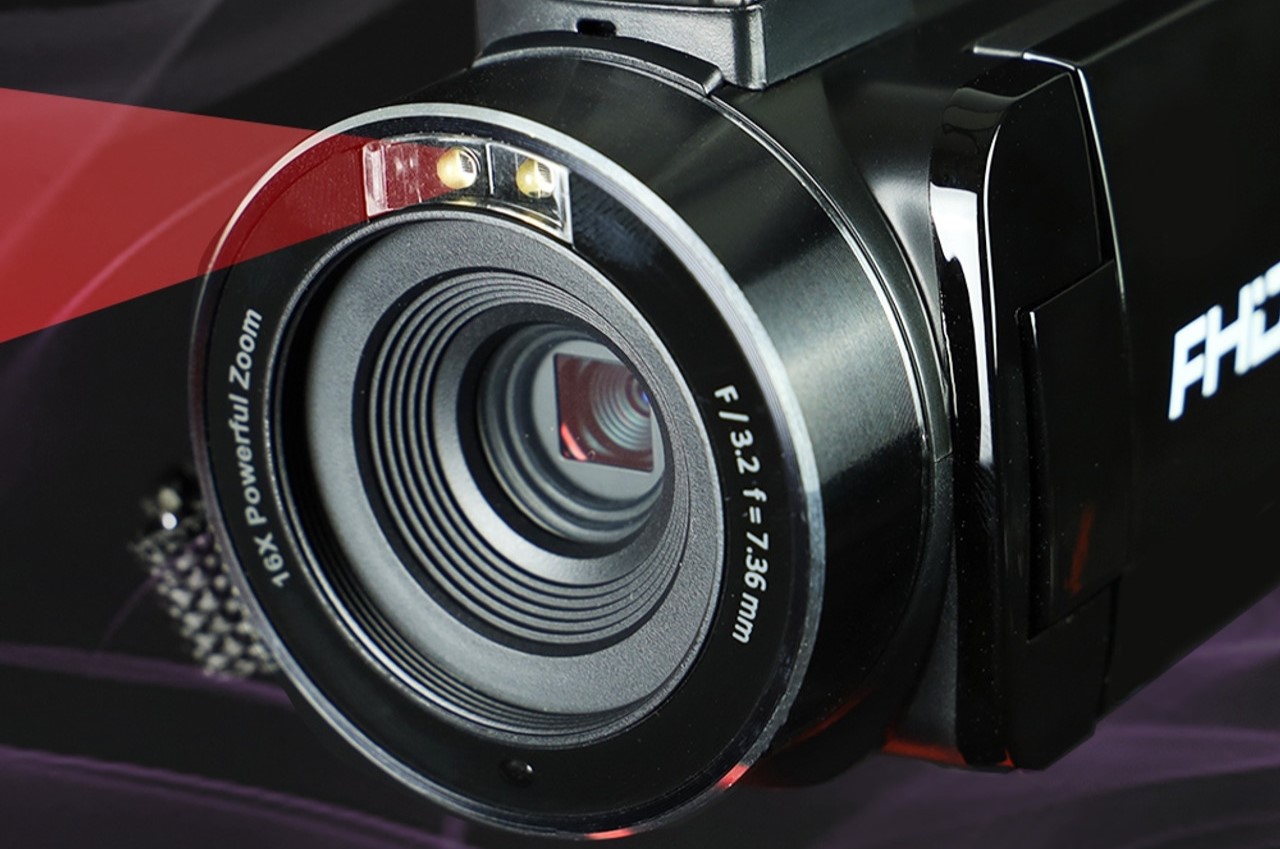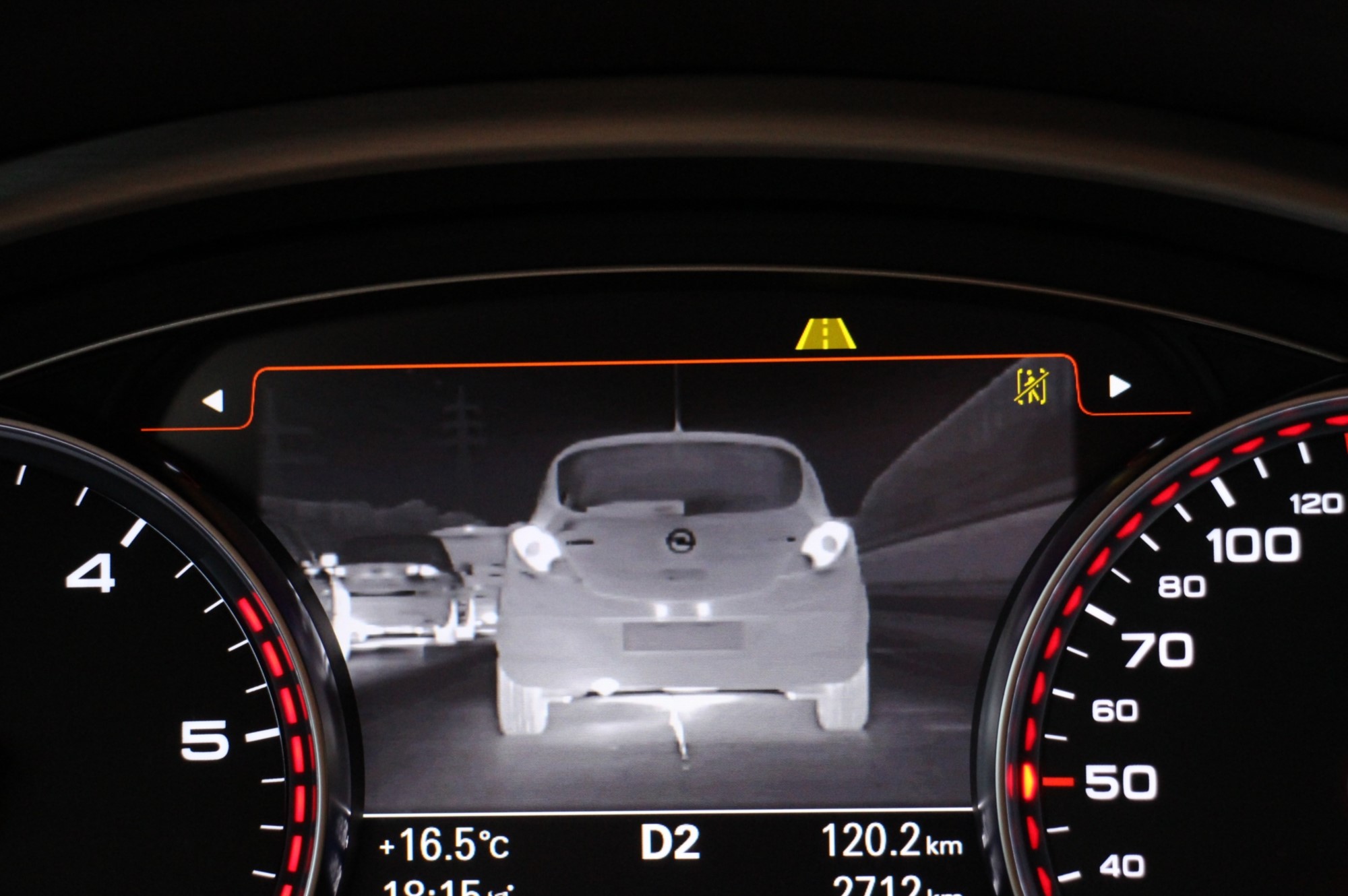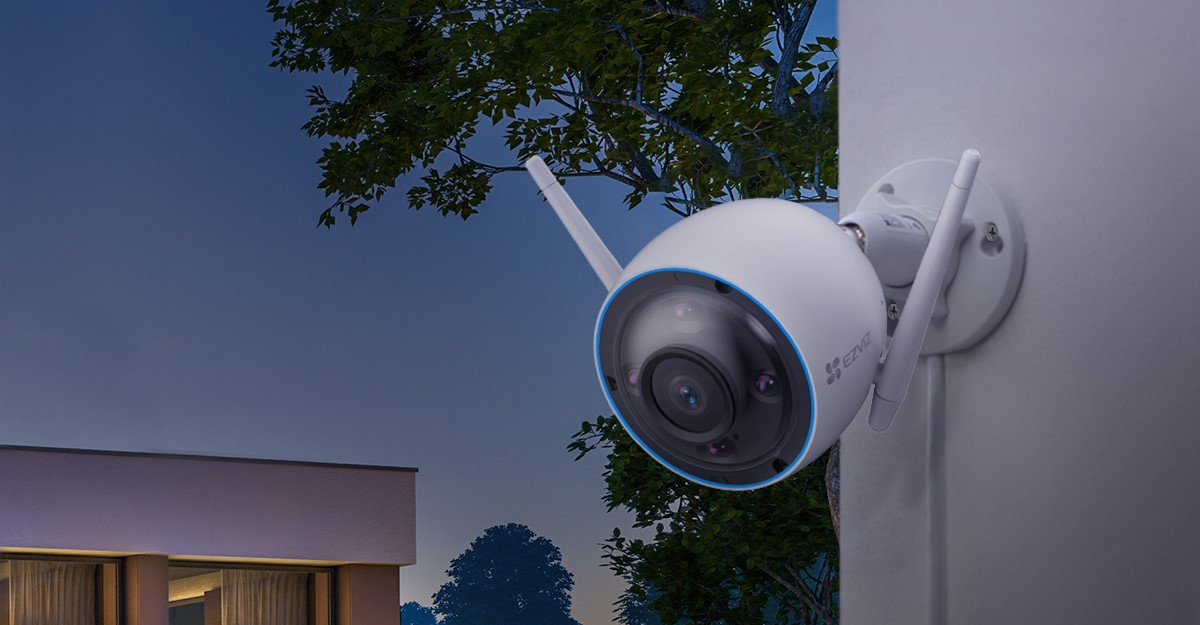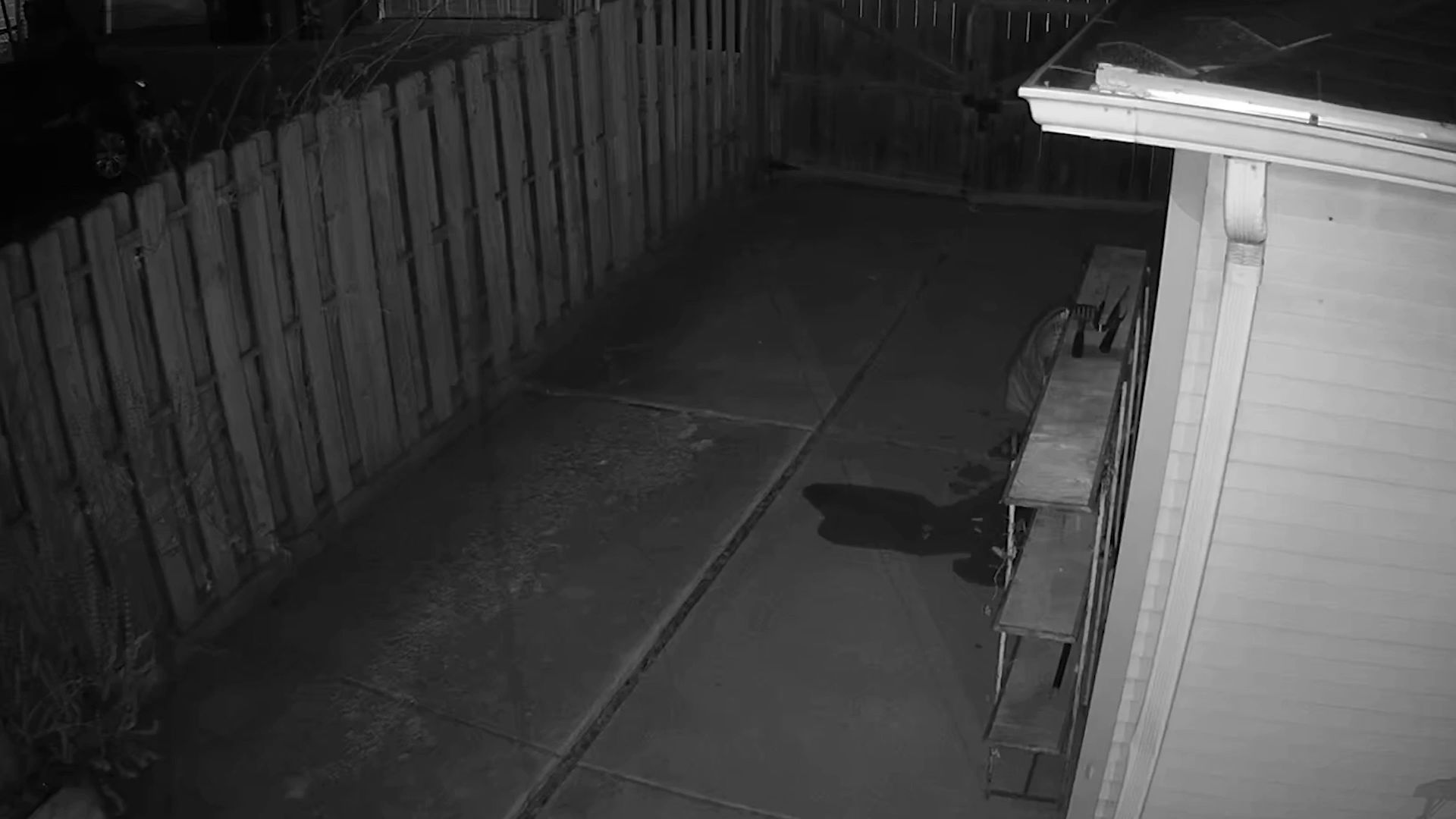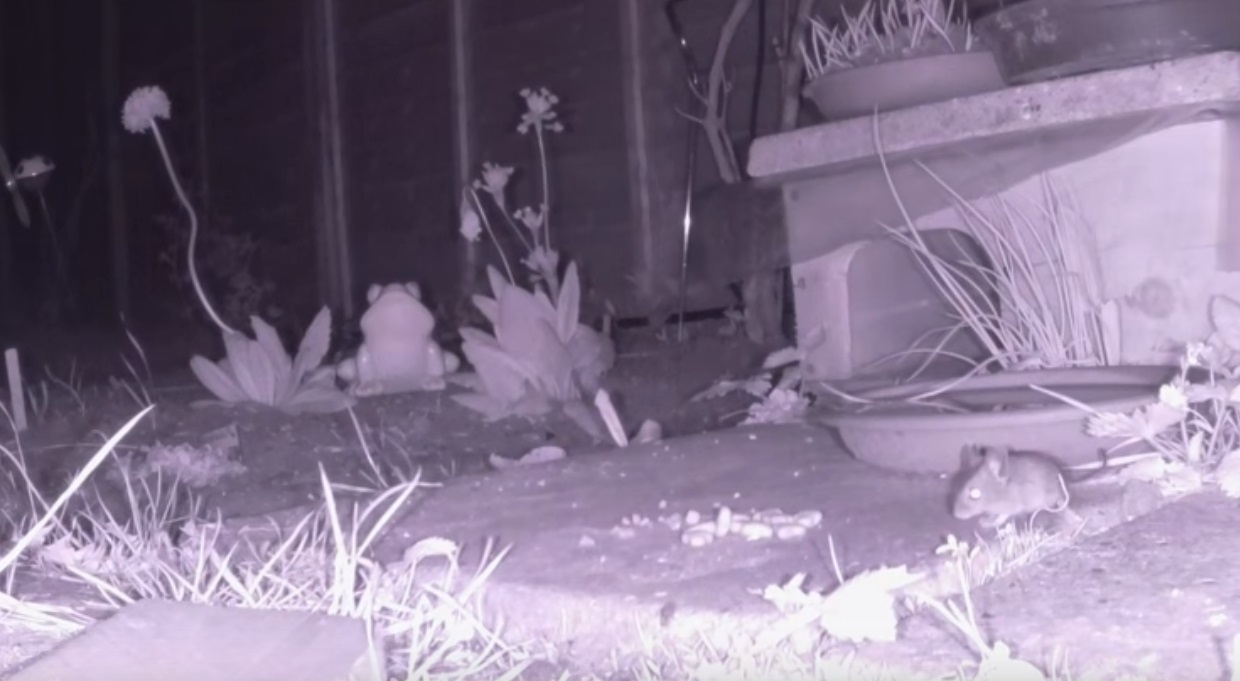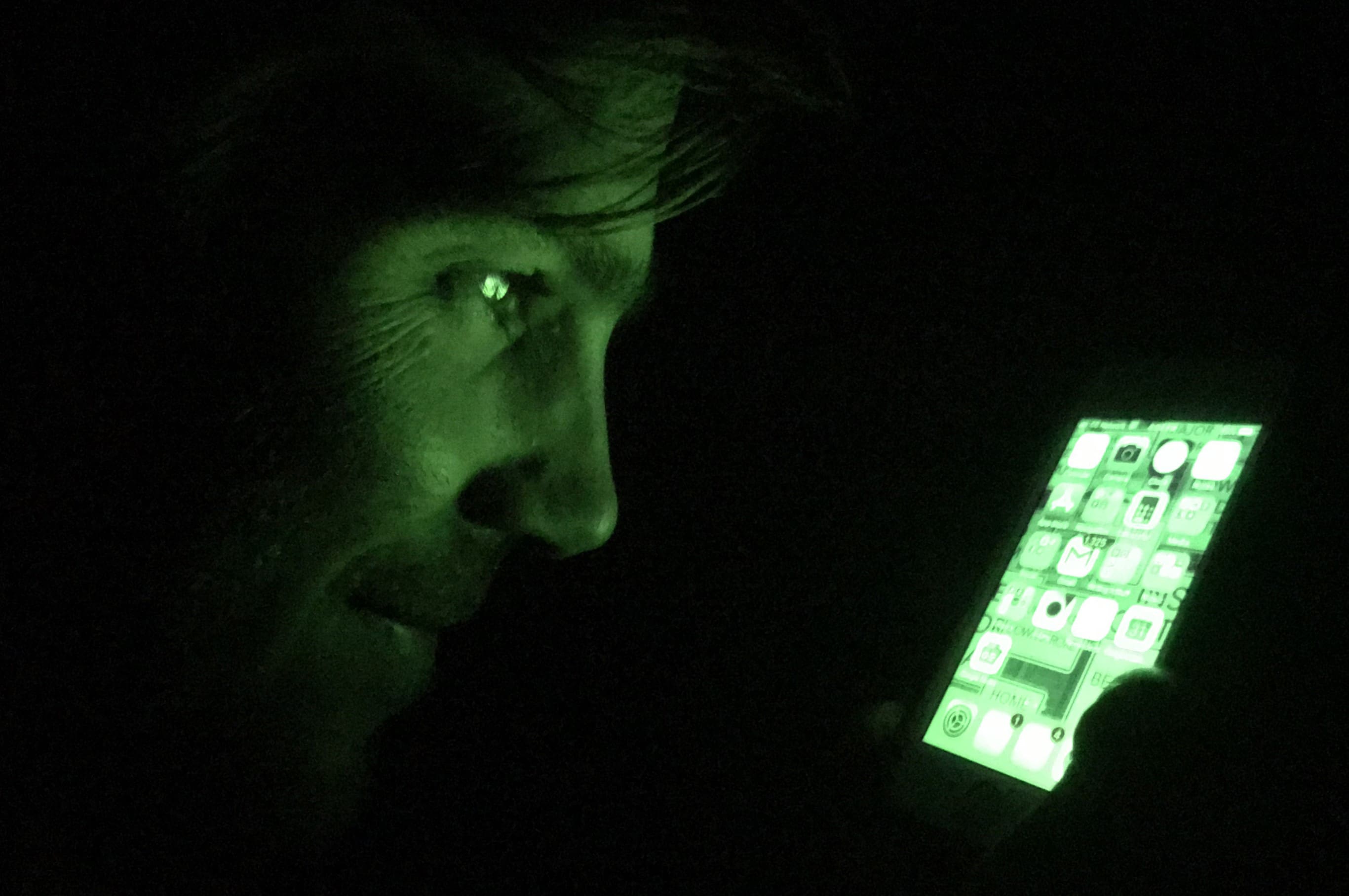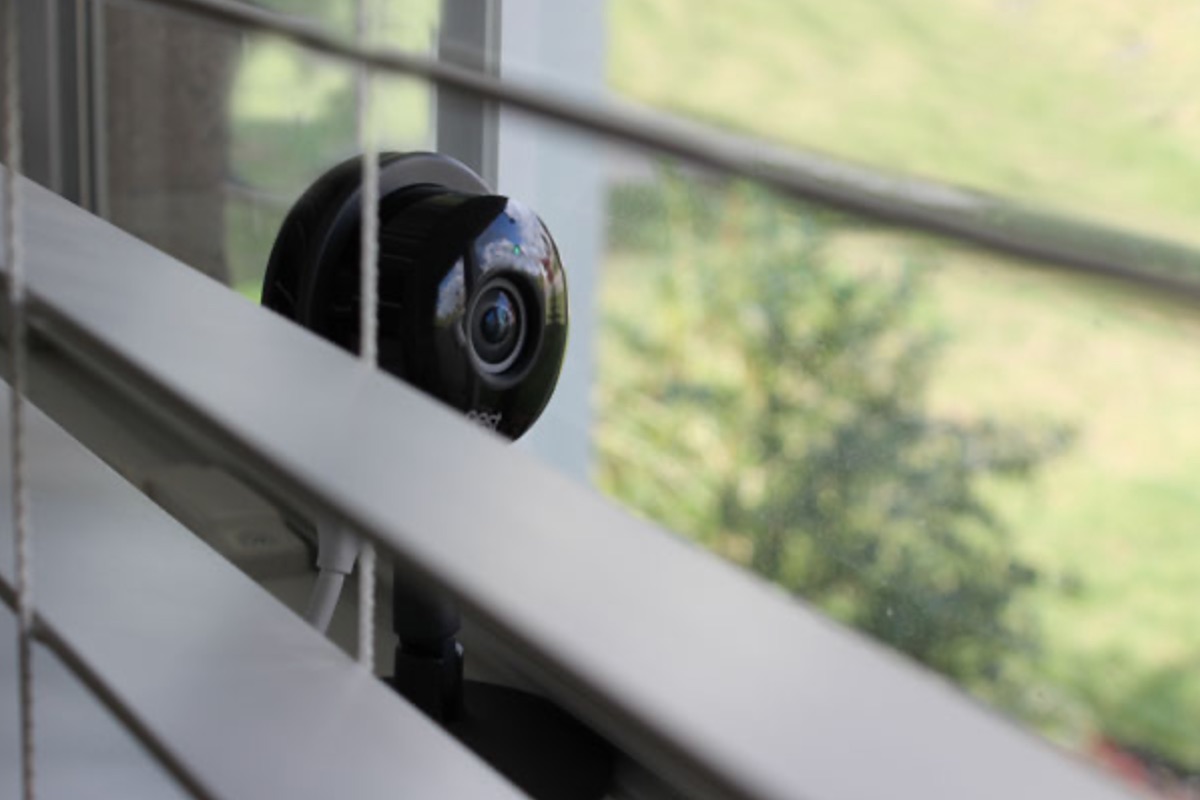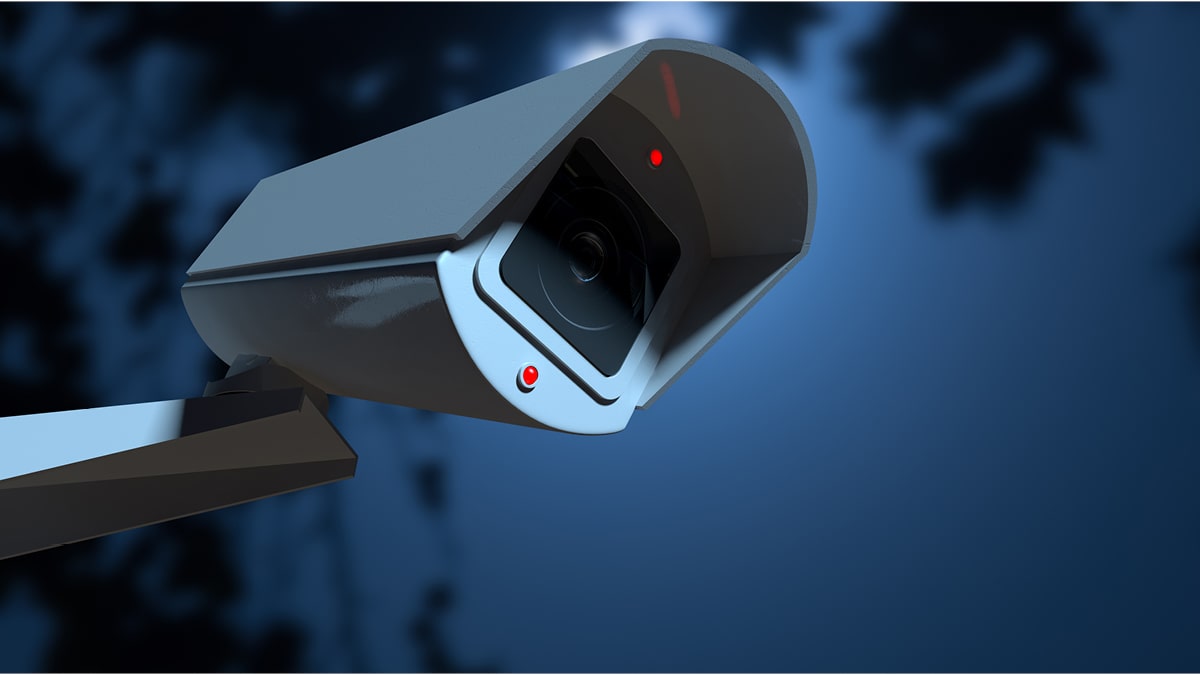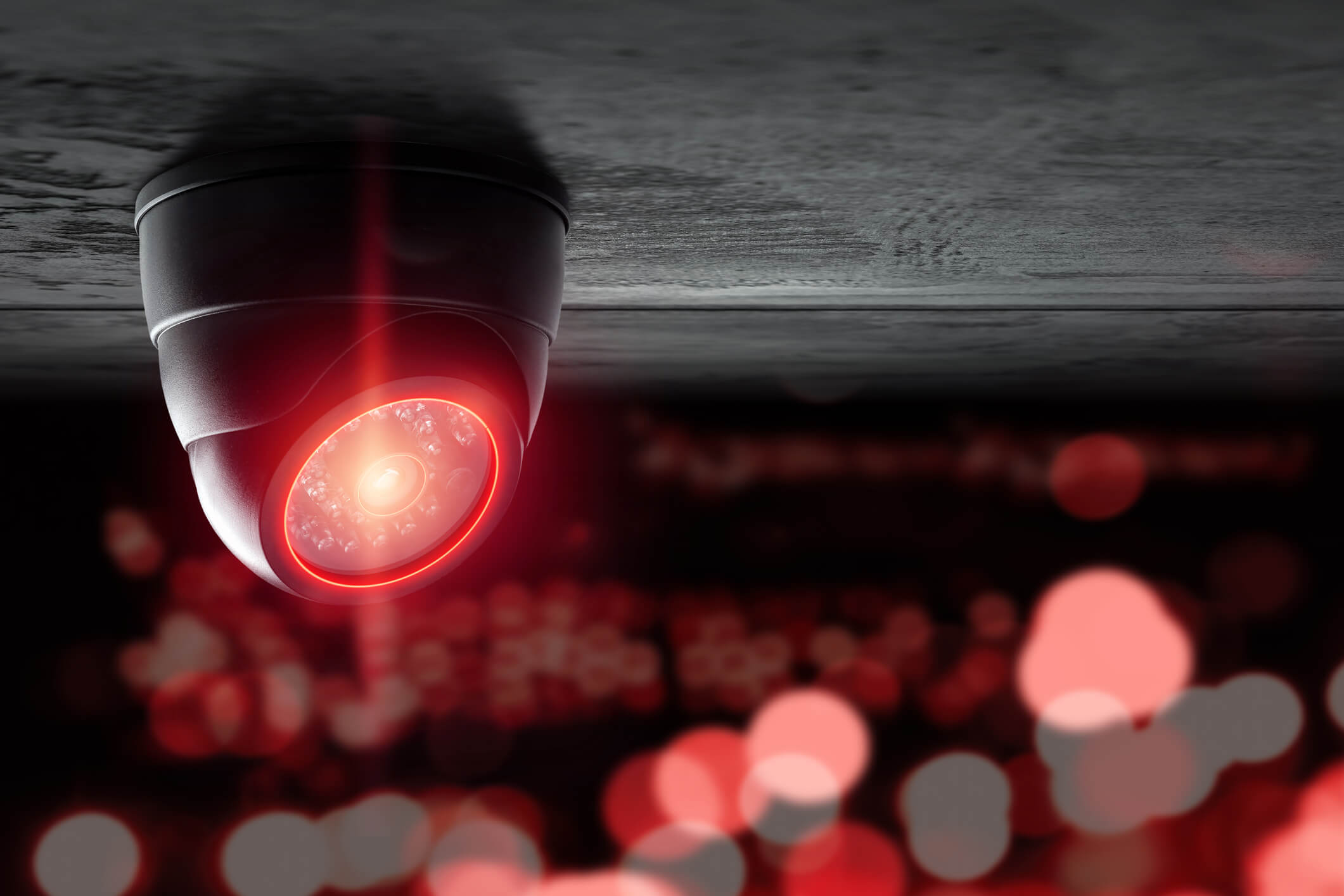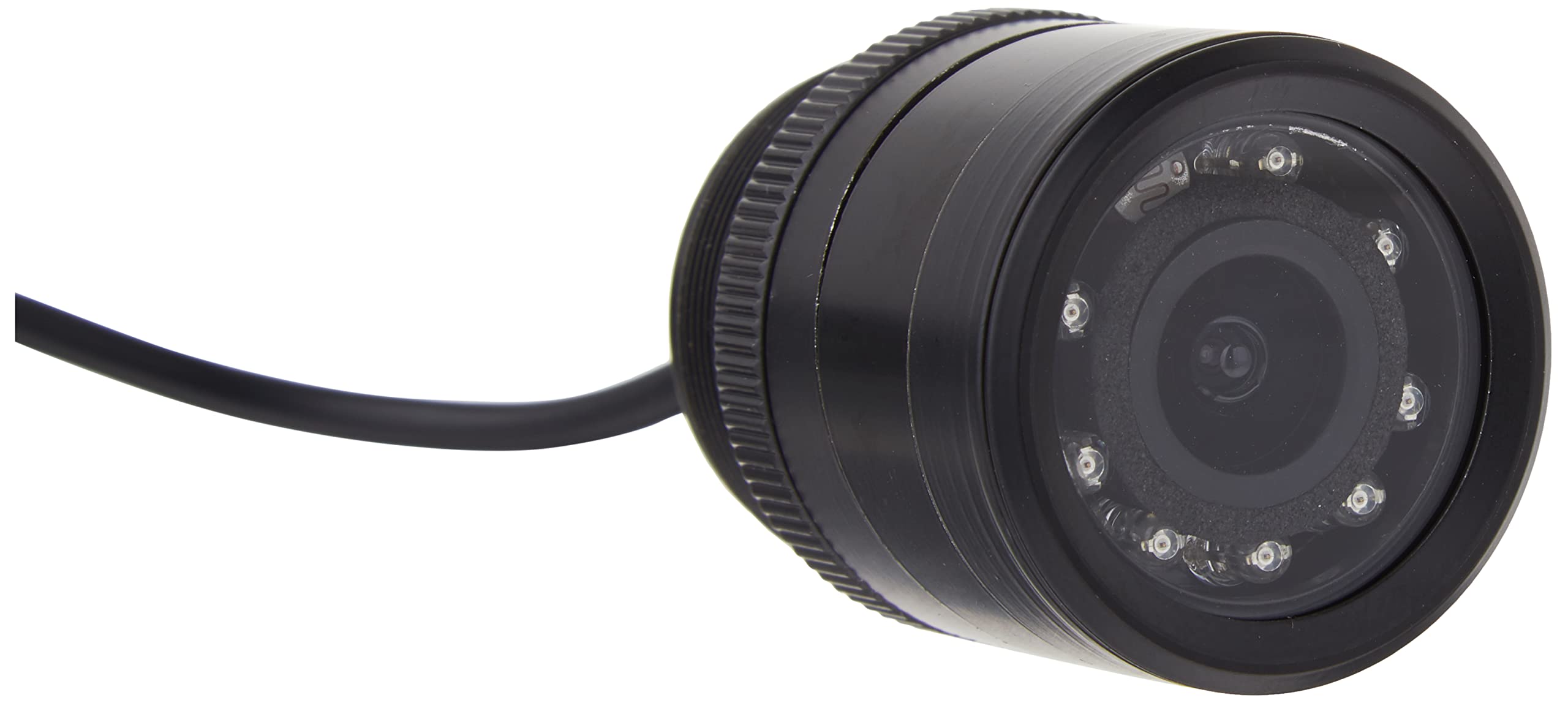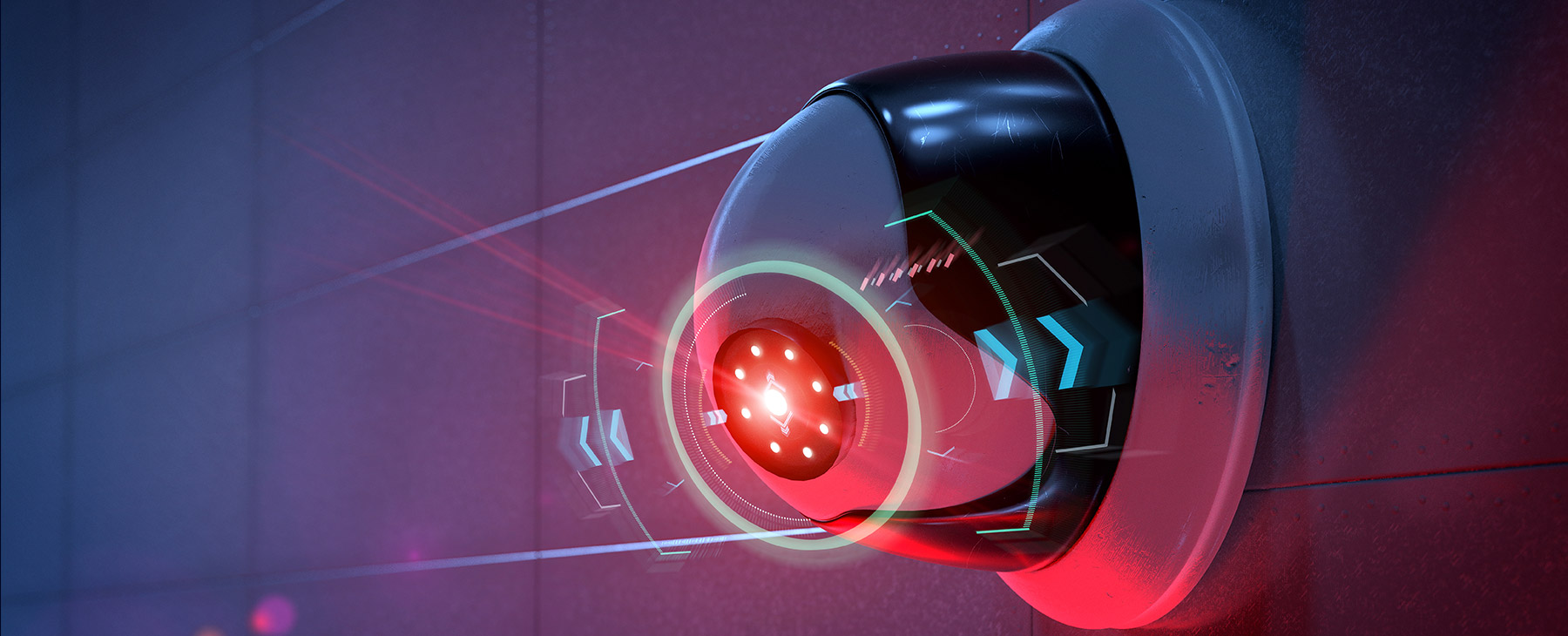Home>Home Security and Surveillance>How To Blind A Night Vision Camera
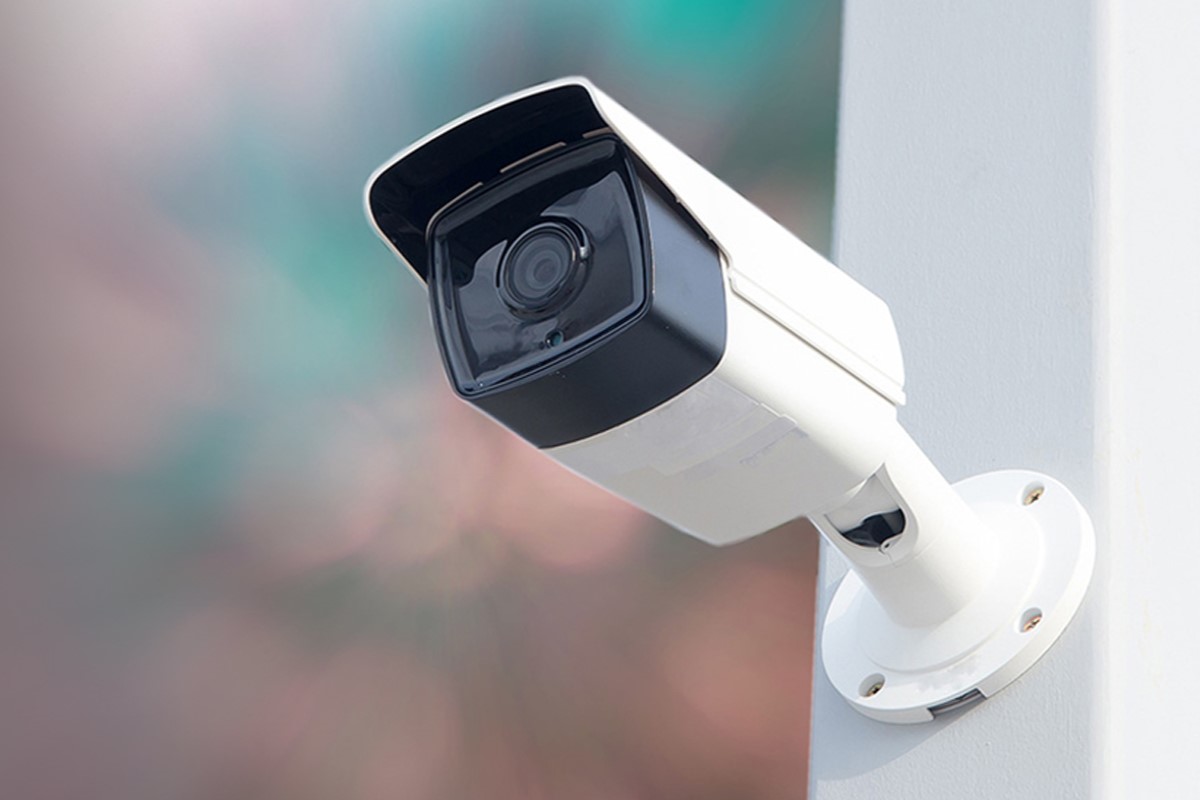

Home Security and Surveillance
How To Blind A Night Vision Camera
Modified: March 6, 2024
Discover how to blind a night vision camera with our comprehensive guide. Enhance your home security and surveillance by learning effective techniques.
(Many of the links in this article redirect to a specific reviewed product. Your purchase of these products through affiliate links helps to generate commission for Storables.com, at no extra cost. Learn more)
Introduction
Welcome to the world of home security and surveillance. In an age where technology plays a vital role in protecting our homes, night vision cameras have become an essential component of many security systems. These cameras provide clear and detailed footage, even in low-light conditions, allowing us to monitor our properties 24/7.
However, just as technology brings us advancements, it also opens up possibilities for countermeasures. In some cases, there might be a need to blind a night vision camera temporarily, whether for personal privacy or security reasons. In this article, we will explore the science behind night vision cameras and delve into techniques to effectively blind them.
Before we dive into the methods, let’s take a moment to understand how night vision cameras work. Night vision cameras utilize advanced imaging technology to capture images in environments with minimal illumination. They are equipped with infrared (IR) sensors and special lenses that allow them to detect and amplify the available light, including the invisible IR spectrum.
The IR sensors in night vision cameras convert infrared light into visible light, creating a clear image even in pitch-black conditions. This technology has revolutionized the surveillance industry, allowing for round-the-clock monitoring and enhancing the safety of our homes and businesses.
While night vision cameras offer numerous benefits, they may sometimes inadvertently invade our privacy or compromise the security of certain sensitive areas. In such cases, it may be necessary to temporarily blind the camera to ensure privacy or protect certain confidential information.
It’s important to note that tampering with night vision cameras without proper authorization may be unlawful and could result in legal consequences. It’s crucial to always adhere to local laws and regulations regarding the use and manipulation of surveillance equipment.
In the following sections, we will explore various methods to blind night vision cameras, each with its own effectiveness and potential risks. Remember, these techniques should only be used responsibly and in compliance with the law. Now, let’s delve into the science behind blinding night vision cameras and the different methods at your disposal.
Key Takeaways:
- You can temporarily blind a night vision camera by flooding it with intense visible light, using powerful infrared sources, or aiming laser pointers at its lens. However, always consider legal and safety implications.
- Blinding a night vision camera should be approached responsibly and sparingly, respecting privacy and following local laws. Prioritize safety, seek professional advice, and document any necessary changes to surveillance systems.
Read more: How To Make A Night Vision Camera
Understanding Night Vision Cameras
Night vision cameras have revolutionized the field of surveillance by enabling clear visibility in low-light and even no-light conditions. Understanding how these cameras work is essential in exploring methods to blind them effectively.
Night vision cameras rely on a combination of infrared technology and image enhancement algorithms to capture and display images in dark environments. The key component of a night vision camera is its infrared sensor.
When there is minimal visible light available, the infrared sensor in the camera detects the heat emitted by objects in the scene. It then converts this heat energy into an electrical signal, which is processed and displayed as a visible image on the camera monitor or recording device.
The infrared sensor in night vision cameras can detect infrared light, which is not visible to the human eye. This allows the camera to capture clear images even in complete darkness. Objects and surfaces that emit heat, such as humans or animals, appear bright in the image, while cooler objects or areas appear darker.
Image enhancement algorithms, such as automatic gain control and noise reduction, further improve the quality of the captured image. These algorithms adjust the brightness and contrast, reduce noise, and sharpen the image to provide a clearer and more detailed view.
The lenses used in night vision cameras are specially designed to focus both visible light and infrared light onto the infrared sensor. This ensures that the camera captures the maximum amount of available light, enhancing its low-light performance.
Some night vision cameras also incorporate additional features, such as motion detection and remote access capabilities, to enhance their functionality and usability.
It’s important to understand that night vision cameras are designed to operate in challenging lighting conditions. They are equipped with technology that enables them to see in situations where our eyes would fail us. This makes them highly effective tools for surveillance and security purposes.
However, as with any technology, night vision cameras have their limitations. They may struggle in certain scenarios, such as when exposed to extremely bright light sources or when obstructed by dense fog or heavy rain.
Now that we have a better understanding of how night vision cameras work, let’s explore some techniques to blind them temporarily, should the need arise.
The Science Behind Blinding Night Vision Cameras
Blinding a night vision camera requires an understanding of the science behind its operation. By disrupting the camera’s ability to capture and process the available light, we can temporarily disable its functionality. Here, we will explore the techniques that can effectively blind night vision cameras.
One of the key factors to consider when attempting to blind a night vision camera is the infrared spectrum. Night vision cameras rely on the detection and amplification of infrared light to produce clear images in low-light situations. By interfering with the camera’s ability to detect or process infrared light, we can hinder its functionality.
One method to blind a night vision camera involves introducing overexposure. By flooding the camera’s field of view with intense sources of visible light, we can overwhelm the camera’s sensors, causing the image to be washed out and preventing the camera from capturing clear footage. This technique is particularly effective in scenarios where the camera’s field of view is small or when the camera is positioned near a well-lit area.
Another approach is to utilize infrared light sources. While night vision cameras are designed to detect and amplify infrared light, excessive exposure to infrared sources can overwhelm the camera’s sensors and disrupt its ability to capture visible images. By strategically placing or directing infrared light towards the camera, we can obstruct its functionality and blind it temporarily.
Laser pointers can also be employed to blind night vision cameras. By directing a laser beam into the camera lens, we can overload its sensors and interfere with its ability to produce clear images. It is important to exercise caution when using laser pointers, as they can cause permanent damage to the camera or pose a safety hazard to individuals nearby.
High-intensity light flares can also be effective in blinding night vision cameras. These flares produce a sudden burst of bright light, which can overload the camera’s sensors and render it temporarily unable to capture usable footage. However, it is essential to exercise caution when handling flares and ensure they are used safely and responsibly.
Infrared filters can be employed to obstruct a night vision camera’s ability to detect and amplify infrared light. These filters are designed to block specific wavelengths of light, including infrared, resulting in a distorted or completely blacked-out image. However, it is important to note that these filters may also impact the camera’s ability to capture visible light, so their use should be approached with caution.
In some cases, disrupting the camera’s electronic system can effectively blind it. This can involve tampering with power supplies, cables, or circuitry, rendering the camera temporarily inoperable. It is crucial to emphasize that tampering with surveillance equipment without proper authorization is highly discouraged and may have legal repercussions.
Before attempting any of these techniques, it is important to carefully consider the legal implications and potential consequences. Tampering with surveillance equipment without proper authorization is often illegal and can result in severe penalties.
In the next sections, we will explore each method in more detail, outlining the steps involved and highlighting any relevant precautions or legal considerations.
Techniques to Blind Night Vision Cameras
When the need arises to blind a night vision camera temporarily, several techniques can be utilized to disrupt the camera’s functionality. It’s important to note that these methods should only be used responsibly and in compliance with local laws and regulations. Let’s explore these techniques in more detail:
1. Introducing Overexposure to the Camera: This technique involves flooding the camera’s field of view with intense sources of visible light. By overwhelming the camera’s sensors with an excessive amount of light, the resulting image becomes washed out and unclear, rendering the camera temporarily disabled. This method is particularly effective when the camera’s field of view is small or when the camera is positioned near a well-lit area.
2. Using Infrared Light Sources: Night vision cameras rely on the detection and amplification of infrared light to operate effectively. By strategically placing or directing powerful infrared light sources towards the camera, it becomes overwhelmed by the influx of infrared light, disrupting its ability to capture clear images. This technique can significantly impair the camera’s functionality in low-light conditions.
3. Employing Laser Pointers: Laser pointers can be used to blind night vision cameras by directing a concentrated beam of light into the camera lens. The intense light from the laser overwhelms the camera’s sensors, causing the image to become distorted or completely washed out. However, caution must be exercised when using lasers, as they can pose a safety hazard and may cause permanent damage to the camera or harm individuals nearby.
4. Utilizing High-intensity Light Flares: High-intensity light flares produce a sudden burst of bright light, which can overload the camera’s sensors and render it temporarily unable to capture usable footage. By strategically positioning and activating these flares in the camera’s field of view, you can effectively blind the camera. It is crucial to handle flares with care and ensure they are used safely and responsibly.
5. Intervening with Infrared Filters: Infrared filters are designed to block specific wavelengths of light, including infrared. By placing these filters over the camera’s lens, you can obstruct the camera’s ability to detect and amplify infrared light, resulting in a distorted or completely blacked-out image. However, it’s important to note that these filters may also impact the camera’s ability to capture visible light, so their use should be approached with caution.
6. Disturbing the Camera’s Electronic System: In some cases, disrupting the camera’s electronic system can effectively blind it. However, tampering with the camera’s power supplies, cables, or circuitry is highly discouraged and may have legal consequences. It’s important to emphasize that altering surveillance equipment without proper authorization is generally illegal and can result in severe penalties.
It’s crucial to consider the legal and ethical implications of blinding a night vision camera. Always ensure that you are acting within the boundaries of local laws and regulations regarding the use of surveillance equipment. In the following sections, we will provide more detailed instructions for each technique, including any relevant precautions and legal considerations.
Method 1: Introducing Overexposure to the Camera
One effective technique to blind a night vision camera temporarily is by introducing overexposure. By flooding the camera’s field of view with intense sources of visible light, the camera’s sensors become overwhelmed, resulting in a washed-out and unclear image. This technique is particularly effective when the camera’s field of view is small or when the camera is positioned near a well-lit area.
Here are the steps involved in utilizing this method:
- Identify the camera’s field of view: Before attempting to blind the camera, it is crucial to determine the specific area that the camera captures. This will help you position and direct the light source more accurately for optimal effect.
- Locate a powerful light source: Look for a high-intensity light source that emits a strong beam of visible light. This could be a powerful flashlight, a spotlight, or any other source that can produce an intense and concentrated beam.
- Position the light source: Once you have identified the camera’s field of view and have a suitable light source, position it in a way that the camera’s view is directly exposed to the intense light. Ideally, the light source should be aimed directly towards the camera’s lens.
- Turn on the light source: Activate the light source to flood the camera’s field of view with intense visible light. The camera’s sensors will be overwhelmed by the brightness, resulting in a washed-out or distorted image.
- Assess the effect: Observe the camera’s display or recording to determine if the overexposure has effectively blinded the camera. The image should be heavily distorted or completely washed out.
It is important to note that this method may not be effective in all situations. Cameras with larger fields of view or those positioned in areas with minimal ambient light may be more challenging to blind through overexposure alone. Additionally, keep in mind that overexposing or shining bright lights at someone else’s property without proper authorization may be illegal.
Always consider the legal and ethical implications of blinding a night vision camera and ensure that you are acting within the boundaries of local laws and regulations. Using this technique responsibly and sparingly can help protect your privacy while also respecting the rights and safety of others.
In the next sections, we will explore additional methods to blind night vision cameras, each with its own unique approach and considerations.
Read more: How Bright Are Night Vision Cameras
Method 2: Using Infrared Light Sources
Blinding a night vision camera can be achieved by effectively interrupting its ability to detect and amplify infrared light. By strategically utilizing infrared light sources, you can overwhelm the camera’s sensors and hinder its functionality in low-light conditions.
Here are the steps involved in utilizing this method:
- Identify the camera’s location and field of view: Before attempting to blind the camera, it is crucial to determine the exact position and field of view of the camera. This will help you position the infrared light source accurately.
- Obtain a powerful infrared light source: Look for an infrared light source that emits a strong and concentrated beam of infrared light. Infrared floodlights or high-intensity infrared LEDs are common options that can generate a sufficient amount of infrared light.
- Position the infrared light source: Place the infrared light source in a way that its beam directly targets the camera’s lens. The goal is to flood the camera’s field of view with intense infrared light.
- Activate the infrared light source: Turn on the infrared light source to emit a steady stream of infrared light towards the camera. The intense infrared light will interfere with the camera’s sensors, making it difficult for the camera to capture clear images in low-light conditions.
- Assess the effect: Monitor the camera’s display or recording to determine if the infrared light source has effectively blinded the camera. The images captured should be distorted or significantly degraded in visibility, indicating a successful disruption of the camera’s functionality.
It’s essential to note that using infrared light sources to blind night vision cameras should be done responsibly and within the boundaries of legal and ethical considerations. Understand the regulations surrounding the use of surveillance equipment and ensure that you are acting within the limits imposed by local laws.
Additionally, it is vital to be mindful of privacy concerns and to respect other individuals’ rights. Blinding a night vision camera in a public space or someone else’s property without proper authorization may be illegal and can have legal repercussions.
By using infrared light sources strategically, you can effectively disrupt a night vision camera’s functionality, ensuring your privacy or protecting sensitive areas from surveillance. However, always exercise caution, follow legal guidelines, and act responsibly when employing this technique.
In the following sections, we will explore additional methods and techniques to blind night vision cameras, each with its own approach and considerations.
To blind a night vision camera, use a bright light source such as a flashlight or laser pointer to overwhelm the camera’s sensor. This will cause the camera to temporarily lose its ability to see in the dark.
Method 3: Employing Laser Pointers
Using laser pointers to blind night vision cameras is a technique that involves directing a concentrated beam of light into the camera’s lens, overwhelming its sensors and impairing its ability to capture clear images.
It is important to note that the use of laser pointers should be approached with caution, as they can pose safety hazards and potentially cause permanent damage to the camera or harm individuals nearby. Always prioritize safety when utilizing this method.
Here are the steps involved in employing laser pointers to blind a night vision camera:
- Identify the camera’s location and field of view: Before proceeding, determine the position and field of view of the camera. This will help you precisely aim the laser pointer.
- Obtain a powerful laser pointer: Choose a laser pointer with a high power output that emits a strong and concentrated beam of light. Ensure that the laser pointer is within the legal power limits established in your jurisdiction.
- Aim the laser beam: Direct the laser pointer’s beam accurately towards the camera’s lens. The goal is to saturate the camera’s sensors with the intense light from the laser pointer.
- Move the laser beam: Gently move the laser beam around the camera’s lens in a controlled manner. The continuous movement can further disrupt the camera’s ability to capture clear images.
- Assess the effect: Monitor the camera’s display or recording to determine if the laser pointer has effectively blinded the camera. The captured images should either be heavily distorted or completely washed out.
It is crucial to exercise responsible and lawful use of laser pointers. In many jurisdictions, shining a laser pointer at surveillance equipment without proper authorization may be considered a criminal offense. Be aware of your local laws and regulations surrounding the use of laser pointers and adhere to them strictly.
Furthermore, ensure that you do not shine the laser beam directly at individuals or aim it at reflective surfaces that may cause unintended harm or accidents.
When employing laser pointers to blind night vision cameras, it is necessary to consider the potential consequences and moral implications. Always prioritize safety, legality, and respect for others’ rights and privacy.
Keep in mind that this technique should be used responsibly, sparingly, and within the boundaries of local laws and regulations. In the following sections, we will explore additional methods to blind night vision cameras, each with its own unique approach and considerations.
Method 4: Utilizing High-intensity Light Flares
Blinding a night vision camera can be achieved by utilizing high-intensity light flares. These flares emit a sudden burst of bright light, overwhelming the camera’s sensors and rendering it temporarily unable to capture usable footage.
It is important to exercise caution when using high-intensity light flares, as they can be potentially dangerous if mishandled. Always prioritize safety and handle flares responsibly.
Here are the steps involved in utilizing high-intensity light flares to blind a night vision camera:
- Identify the camera’s location and field of view: Before proceeding, determine the position and field of view of the camera. This will help you accurately position the high-intensity light flare.
- Obtain high-intensity light flares: Purchase high-quality, reliable light flares designed for outdoor use. Ensure that the flares you choose have a high-intensity output and a duration that suits your needs.
- Position the flares: Place the high-intensity light flares strategically in the camera’s field of view. Consider the distance of the flares from the camera and aim to position them in a way that their brightness fully engulfs the camera’s perspective.
- Activate the flares: Ignite the flares according to the manufacturer’s instructions. The sudden burst of bright light from the flares will overwhelm the camera’s sensors, rendering it unable to capture usable footage.
- Assess the effect: Monitor the camera’s display or recording to determine if the high-intensity light flares have successfully blinded the camera. The captured images should be heavily distorted or completely washed out, indicating the disruption of the camera’s functionality.
Be sure to handle high-intensity light flares with care, following all safety guidelines provided by the manufacturer. This includes wearing protective eyewear and gloves, as well as positioning the flares in a suitable and safe location.
It’s crucial to consider the potential risks and legal implications associated with using high-intensity light flares. Mishandling flares or disturbing the peace with excessive use without proper authorization may be considered illegal in some jurisdictions.
Prioritize the responsible and ethical use of high-intensity light flares, ensuring that you respect others’ rights and safety. Always comply with local laws and regulations regarding the use of such devices.
In the following sections, we will explore additional methods and techniques to blind night vision cameras, each with its own unique approach and considerations.
Method 5: Intervening with Infrared Filters
Blinding a night vision camera can be achieved by utilizing infrared filters. These filters are designed to block specific wavelengths of light, including infrared, which is crucial for the functioning of night vision cameras. By placing these filters over the camera’s lens, you can obstruct the camera’s ability to detect and amplify infrared light, resulting in a distorted or completely blacked-out image.
However, it’s important to note that using infrared filters may also impact the camera’s ability to capture visible light, so their use should be approached with caution.
Here are the steps involved in utilizing infrared filters to blind a night vision camera:
- Identify the camera’s location and field of view: Before proceeding, determine the position and field of view of the camera. This will help you accurately position the infrared filter.
- Obtain suitable infrared filters: Look for high-quality infrared filters specifically designed for use with cameras or lenses. Ensure that the filters block the appropriate infrared wavelength range while allowing desired visible light to pass through.
- Place the infrared filter: Carefully position the infrared filter over the camera’s lens. Make sure the filter covers the entire lens area and is securely attached or held in place.
- Assess the effect: Monitor the camera’s display or recording to determine if the infrared filter has successfully blinded the camera. The captured images should either be heavily distorted or completely darkened, indicating a disruption of the camera’s functionality in low-light situations.
While the use of infrared filters can effectively block infrared light, it’s crucial to consider the potential impact on the camera’s overall performance. Depending on the camera’s design and sensitivity, the filter may also reduce the camera’s ability to capture visible light effectively. Experimentation and adjustment may be required to find the optimal balance between blocking infrared light and preserving image quality.
Additionally, bear in mind that tampering with surveillance equipment without proper authorization may be illegal and can have legal repercussions. Always adhere to local laws and regulations regarding the use and manipulation of surveillance devices.
Prioritize responsible and lawful use of infrared filters, ensuring that you respect others’ rights and privacy. Properly document and inform relevant parties about any changes made to surveillance equipment to maintain transparency and prevent misunderstandings.
In the following sections, we will explore additional methods and techniques to blind night vision cameras, each with its own unique approach and considerations.
Read more: How To Fix A Night Vision Camera
Method 6: Disturbing the Camera’s Electronic System
Disturbing the electronic system of a night vision camera can be an alternative method to blind it temporarily. By tampering with the camera’s power supplies, cables, or circuitry, you can render the camera inoperable, thereby disrupting its ability to capture footage.
It’s important to note that tampering with surveillance equipment without proper authorization is highly discouraged and may have legal consequences. This method should only be considered under lawful circumstances and with the necessary expertise to ensure the safety and functionality of the camera.
Here are the steps involved in disturbing the camera’s electronic system:
- Understand the camera’s electronic setup: Gain an understanding of the camera’s electronic components, power supply configuration, and wiring connections. This knowledge will help you identify potential points of intervention.
- Disconnect power supplies: Safely disconnect the camera’s power supplies, such as unplugging power cords or disabling batteries, to interrupt the flow of electricity. This can effectively render the camera inoperable.
- Tamper with cables and connections: Carefully manipulate or disconnect the cables and connectors that provide signal transmission between the camera and the monitoring system. This disruption will prevent the camera from transmitting or receiving video feed.
- Damage the camera’s circuitry: Proceed with caution and only if you have the expertise to do so. Introducing damage to the camera’s circuitry or critical components can render the camera permanently dysfunctional.
- Assess the effect: Verify the camera’s functionality by monitoring the display or recording system. If the camera is successfully disturbed, it will no longer capture or transmit clear images.
It’s important to reiterate that tampering with surveillance equipment without proper authorization is generally illegal and can result in severe penalties. Always respect applicable laws and regulations regarding the use and manipulation of surveillance devices.
This method should only be used responsibly and in lawful circumstances, such as authorized maintenance, repairs, or adjustments performed by qualified professionals.
Prioritize the safety and functionality of surveillance systems, as they play a crucial role in ensuring security and peace of mind. Consult with professionals in the field for guidance and assistance to minimize any potential risks or legal ramifications.
In the next sections, we will provide important precautions and legal considerations to keep in mind when attempting to blind night vision cameras. Stay informed and act responsibly when dealing with surveillance equipment.
Precautions and Legal Considerations
When attempting to blind night vision cameras, it is essential to prioritize safety, respect the rights of others, and adhere to legal and ethical guidelines. Here are some precautions and legal considerations to keep in mind:
1. Legal Compliance: Familiarize yourself with the local laws and regulations regarding the use and manipulation of surveillance equipment. Understand the legal boundaries and restrictions that apply to blinding night vision cameras. Tampering with surveillance devices without proper authorization is generally illegal and can result in severe penalties.
2. Responsible Use: Use the techniques discussed in this article responsibly and sparingly. Blinding a night vision camera should only be done when there is a legitimate reason to do so, such as protecting personal privacy or ensuring the security of sensitive areas. Consider the potential consequences and ensure that your actions align with ethical standards.
3. Safety Precautions: Prioritize safety when employing techniques like introducing overexposure, using laser pointers, or employing high-intensity light flares. Follow manufacturer guidelines when handling flares or laser pointers to prevent accidents or harm to yourself and others. Use protective eyewear and gloves when necessary.
4. Privacy and Consent: Consider the privacy concerns of individuals who may be affected by blinding night vision cameras. Respect the rights and privacy of others when making decisions regarding the use of surveillance equipment. Always obtain proper consent if you are blinding a camera on someone else’s property.
5. Potential Risks: Understand the potential risks associated with blinding night vision cameras. The methods discussed in this article may disrupt the functionality of the camera temporarily or permanently. In some cases, attempts to blind cameras may be detected, and you could face legal consequences. Proceed with caution and assume responsibility for your actions.
6. Seek Professional Advice: If you are unsure about the legal or technical aspects of blinding night vision cameras, consult with professionals in the field. They can provide guidance and assistance while ensuring your actions remain within legal boundaries.
7. Documentation and Transparency: If you need to blind a camera for legitimate purposes, properly document and inform relevant parties about any changes made to the surveillance system. Maintain transparency and clarity to prevent misunderstandings and potential legal issues in the future.
Always prioritize safety, legality, and respect for the rights and privacy of others when dealing with surveillance equipment. Act responsibly, be aware of the laws in your jurisdiction, and seek professional advice when needed.
Blinding a night vision camera should be approached with caution and used sparingly. The purpose is to ensure security or protect privacy within the bounds of the law. When done responsibly, these techniques can provide temporary relief or protection. Act within legal boundaries and exercise sound judgment to maintain personal safety and privacy for yourself and others.
By considering these precautions and legal considerations, you can approach blinding night vision cameras in a responsible and lawful manner.
Conclusion
Blinding a night vision camera temporarily can be a challenging task that requires a thorough understanding of the camera’s technology and functions. Throughout this article, we have explored various techniques that can effectively disrupt the functionality of night vision cameras, providing temporary relief or protection for privacy and security concerns.
It is important to approach the blinding of night vision cameras responsibly, ensuring that your actions align with legal and ethical considerations. Always prioritize safety, respect the rights of others, and adhere to local laws and regulations regarding the use and manipulation of surveillance equipment.
Understanding the science behind night vision cameras, including their reliance on infrared light and image enhancement algorithms, is essential in effectively disrupting their functionality. Techniques such as introducing overexposure, using infrared light sources, employing laser pointers, utilizing high-intensity light flares, intervening with infrared filters, or disturbing the camera’s electronic system, each have their own unique approach and considerations.
It is crucial to exercise caution and consider the potential risks associated with blinding night vision cameras. Mishandling equipment, causing permanent damage, or engaging in unlawful activities can result in legal consequences.
By following proper precautions, seeking professional advice when needed, and acting responsibly, you can approach blinding night vision cameras in a responsible and lawful manner, ensuring the privacy and security you desire while respecting the rights of others.
Remember, maintaining a balance between personal security and privacy is vital. It’s important to assess the need to blind a night vision camera and consider alternative solutions before resorting to these techniques.
Surveillance technology continues to evolve, and so do the methods to counter it. Stay informed, stay safe, and approach the use of these methods responsibly and legally to protect your privacy and security.
By following the guidelines and considerations mentioned in this article, you can navigate the world of blinding night vision cameras with knowledge and awareness, ensuring the responsible and lawful use of these techniques.
Frequently Asked Questions about How To Blind A Night Vision Camera
Was this page helpful?
At Storables.com, we guarantee accurate and reliable information. Our content, validated by Expert Board Contributors, is crafted following stringent Editorial Policies. We're committed to providing you with well-researched, expert-backed insights for all your informational needs.
